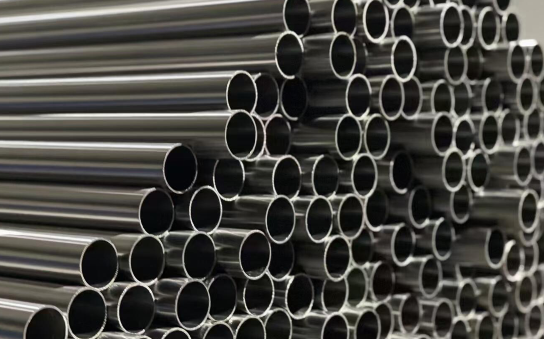
Applications of 316 Stainless Steel Seamless Pipes
Date:2025-11-20 keywords: 316 stainless steel seamless pipe application, 316 ss seamless pipe use
316 Stainless steel seamless pipes are long strips of steel with a hollow cross-section and no seams, made of 316 stainless steel. They possess excellent corrosion resistance and high-temperature resistance, and are widely used in chemical, petroleum, and pharmaceutical industries.
Characteristics of 316 Stainless Steel:
1. Excellent Corrosion Resistance: Especially with the addition of molybdenum (Mo), its resistance to pitting and crevice corrosion far exceeds that of 304 stainless steel, particularly in chloride-containing environments.
2. High Strength: Maintains good mechanical properties at both high and low temperatures.
3. Good Machinability and Weldability.
Application Areas of 316 Stainless Steel Seamless Pipes:
1. Chemical and Petrochemical Industries
This is the most classic and important application area for 316 stainless steel seamless pipes.
Corrosion-resistant piping systems: Used for transporting various corrosive chemicals, such as acids, alkalis, and salt solutions.
Pressure Vessel Piping: Used as pressure-bearing pipelines in equipment such as reactors, towers, and heat exchangers.
Marine Engineering and Offshore Platforms: Resistant to corrosion from chlorides in seawater, used for seawater cooling, fire fighting, and water injection systems.
2. Food and Pharmaceutical Industry
Thanks to its hygiene and corrosion resistance, it is the preferred material for food, beverage, and pharmaceutical production lines.
Process Piping: Transports raw materials, semi-finished products, and finished products (such as juice, milk, beer, and pharmaceutical solutions).
CIP/SIP Systems: Piping for in-line cleaning and sterilization systems, capable of withstanding cleaning agents and high-temperature steam.
Biofermenters: Used in pharmaceuticals and bioengineering for material and air transport in fermenters.
3. Energy and Power Industry
Nuclear Power Industry: Used for piping in certain auxiliary systems of nuclear power plants, requiring extremely high safety and corrosion resistance.
Coal Power Generation: Used for high-pressure, high-temperature piping such as superheater tubes and reheater tubes in boilers.
Flue Gas Desulfurization Systems: Resistant to corrosion from sulfur-containing flue gas condensate.
4. Marine and Shipbuilding
Marine Piping Systems: Used for ballast water systems, fire protection systems, fuel systems, and various pipelines in contact with seawater.
Seawater Desalination Units: Utilizes as core piping material for reverse osmosis membrane housings and multi-effect evaporators.
5. Medical and Medical Devices
High-Precision Medical Devices: Used as raw materials for manufacturing surgical instruments and implants (such as orthopedic implants).
Pharmaceutical Equipment Connecting Pipes: Connects various pharmaceutical equipment in a sterile environment.
6. Aerospace and Military Industry
Hydraulic System Piping: Hydraulic pipelines in critical components such as aircraft landing gear, requiring extremely high strength and reliability.
Engine-Related Piping: Pipes used to transport fuel, lubricating oil, or air.
7. Architecture and Decoration
Characteristics of 316 Stainless Steel:
1. Excellent Corrosion Resistance: Especially with the addition of molybdenum (Mo), its resistance to pitting and crevice corrosion far exceeds that of 304 stainless steel, particularly in chloride-containing environments.
2. High Strength: Maintains good mechanical properties at both high and low temperatures.
3. Good Machinability and Weldability.
4. Hygiene: Smooth surface, not easily attracting bacteria and dirt, easy to clean and sterilize.

Application Areas of 316 Stainless Steel Seamless Pipes:
1. Chemical and Petrochemical Industries
This is the most classic and important application area for 316 stainless steel seamless pipes.
Corrosion-resistant piping systems: Used for transporting various corrosive chemicals, such as acids, alkalis, and salt solutions.
Pressure Vessel Piping: Used as pressure-bearing pipelines in equipment such as reactors, towers, and heat exchangers.
Marine Engineering and Offshore Platforms: Resistant to corrosion from chlorides in seawater, used for seawater cooling, fire fighting, and water injection systems.
2. Food and Pharmaceutical Industry
Thanks to its hygiene and corrosion resistance, it is the preferred material for food, beverage, and pharmaceutical production lines.
Process Piping: Transports raw materials, semi-finished products, and finished products (such as juice, milk, beer, and pharmaceutical solutions).
CIP/SIP Systems: Piping for in-line cleaning and sterilization systems, capable of withstanding cleaning agents and high-temperature steam.
Biofermenters: Used in pharmaceuticals and bioengineering for material and air transport in fermenters.
3. Energy and Power Industry
Nuclear Power Industry: Used for piping in certain auxiliary systems of nuclear power plants, requiring extremely high safety and corrosion resistance.
Coal Power Generation: Used for high-pressure, high-temperature piping such as superheater tubes and reheater tubes in boilers.
Flue Gas Desulfurization Systems: Resistant to corrosion from sulfur-containing flue gas condensate.
4. Marine and Shipbuilding
Marine Piping Systems: Used for ballast water systems, fire protection systems, fuel systems, and various pipelines in contact with seawater.
Seawater Desalination Units: Utilizes as core piping material for reverse osmosis membrane housings and multi-effect evaporators.
5. Medical and Medical Devices
High-Precision Medical Devices: Used as raw materials for manufacturing surgical instruments and implants (such as orthopedic implants).
Pharmaceutical Equipment Connecting Pipes: Connects various pharmaceutical equipment in a sterile environment.
6. Aerospace and Military Industry
Hydraulic System Piping: Hydraulic pipelines in critical components such as aircraft landing gear, requiring extremely high strength and reliability.
Engine-Related Piping: Pipes used to transport fuel, lubricating oil, or air.
7. Architecture and Decoration
Seamless pipes are also used in some high-end applications for handrails, railings, door and window frames, curtain wall support structures, etc.
Read more: Should I Choose 304 Or 316 Stainless Steel for Bathroom?
- 【Prev】 : Seamless Steel Pipes for Construction Machinery
- 【Next】 : No infomation!
News Update :
Applications of 316 Stainless Steel Seamless Pipes...
©2017 Permanent Steel Manufacturing Co.,Ltd https://www.permanentsteel.com All Rights Reserved.
Terms of Sale|Privacy Policy


